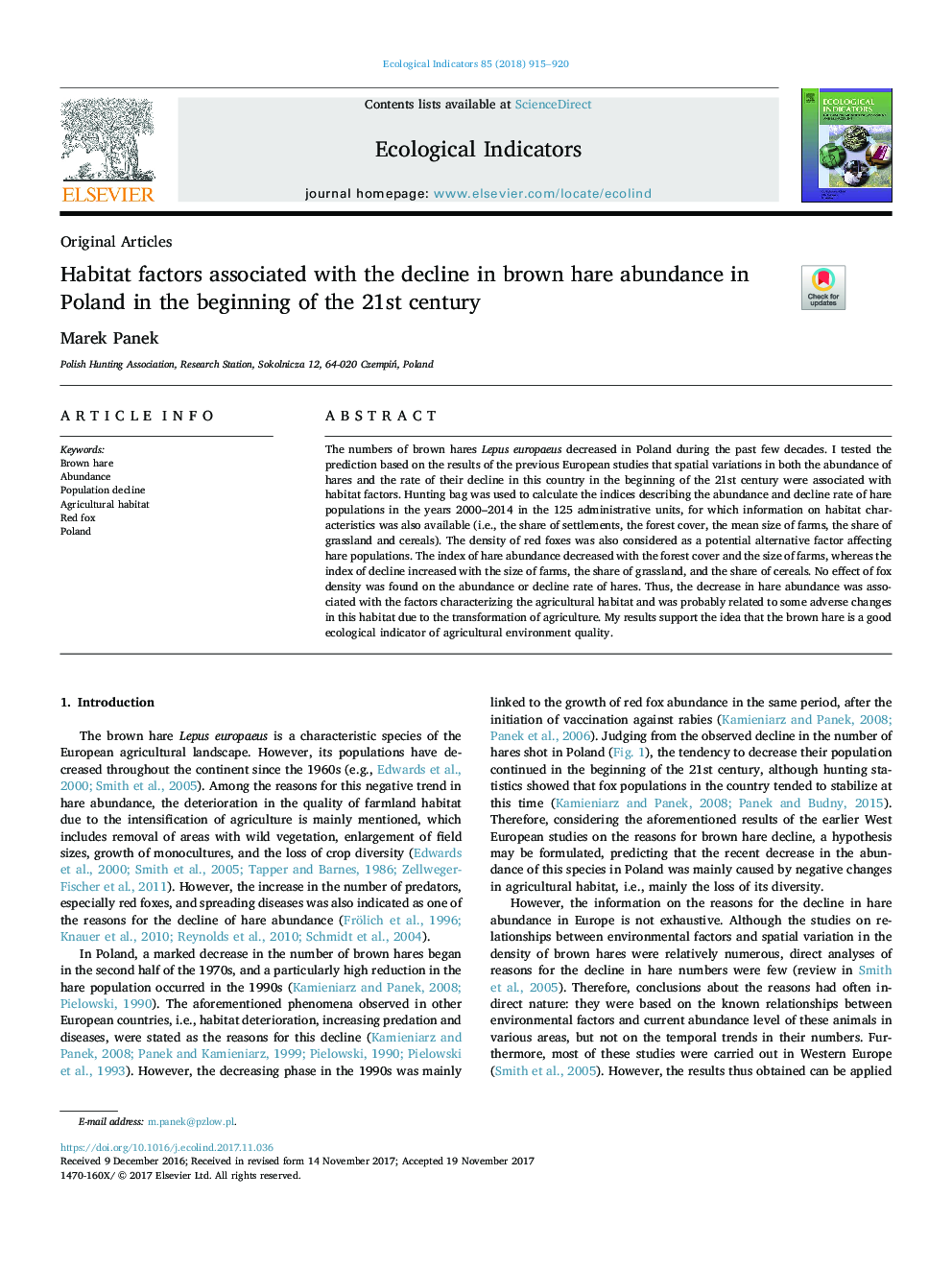| Article ID | Journal | Published Year | Pages | File Type |
|---|---|---|---|---|
| 8845770 | Ecological Indicators | 2018 | 6 Pages |
Abstract
The numbers of brown hares Lepus europaeus decreased in Poland during the past few decades. I tested the prediction based on the results of the previous European studies that spatial variations in both the abundance of hares and the rate of their decline in this country in the beginning of the 21st century were associated with habitat factors. Hunting bag was used to calculate the indices describing the abundance and decline rate of hare populations in the years 2000-2014 in the 125 administrative units, for which information on habitat characteristics was also available (i.e., the share of settlements, the forest cover, the mean size of farms, the share of grassland and cereals). The density of red foxes was also considered as a potential alternative factor affecting hare populations. The index of hare abundance decreased with the forest cover and the size of farms, whereas the index of decline increased with the size of farms, the share of grassland, and the share of cereals. No effect of fox density was found on the abundance or decline rate of hares. Thus, the decrease in hare abundance was associated with the factors characterizing the agricultural habitat and was probably related to some adverse changes in this habitat due to the transformation of agriculture. My results support the idea that the brown hare is a good ecological indicator of agricultural environment quality.
Related Topics
Life Sciences
Agricultural and Biological Sciences
Ecology, Evolution, Behavior and Systematics
Authors
Marek Panek,
